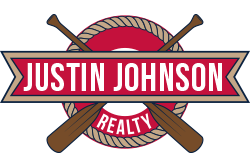What’s Included in Closing Costs
When buying or selling a home, it’s easy to focus on the sale price and forget about the additional expenses that come with finalizing the deal. These are known as closing costs, a combination of fees that can impact your budget more than you expect.
Whether you’re a first-time homebuyer or a seasoned seller, understanding what’s included in closing costs helps you prepare financially, avoid surprises, and make informed decisions throughout the transaction.
At Justin Johnson Realty, we have provided answers from our experts on what you need to know about closing costs.
What are Closing Costs in Real Estate?
Closing costs are charges incurred by both the buyer and seller at the final step of selling a property, specifically when ownership transfers from the seller to the buyer. These are separate from the down payment or sale price. These include loan origination, title insurance, appraisal, property inspections, escrow services, recording fees, transfer taxes, prepaid insurance and taxes, and more.
What Fees and Expenses Are Part of Closing Costs?
Less than 20% on conventional loans, protecting the lender in the event. Knowing what to expect can help you budget more accurately. Below is a breakdown of common fees and who typically pays them.
Home Appraisal Fees
Title Search Fee
Transfer Fee
Recording Fee
Mortgage Lender Fees
Prepaid Interest
Private Mortgage Insurance (PMI)
Knowing what to expect can help you budget more accurately. Below is a breakdown of common fees and who typically pays them.
Discount Points
These are optional upfront charges, typically amounting to 1% of the loan amount, paid to reduce the interest rate over the life of the loan. The buyer usually pays this.
Property Taxes
Homeowners Insurance
Land Survey Fee
Home Inspection
Real Estate Agent Commissions
Transfer Taxes
Legal or Attorney Fees
Outstanding Mortgage Balance
Conveyance Fees
What is the Most Seller Can Pay in Closing Costs?
The maximum amount a seller can contribute to a buyer’s closing costs ranges anywhere from 3% to 9% of the sales price, depending on the type of loan being used and the size of the down payment. These contributions, often referred to as seller concessions, help reduce the buyer’s upfront expenses but must stay within limits set by loan guidelines.
Here’s a breakdown by mortgage loan type:
Conventional Loans
- Up to 3% if the buyer puts down less than 10%
- Up to 6% if the buyer puts down 10-25%
- Up to 9% if the buyer puts down more than 25%
- Investment properties are capped at 2%.
Conventional Loans
Sellers can contribute up to 6% of the lesser between the home’s sale price and appraised value. This can be used toward closing costs, prepaid items, or discount points.
VA Loans
USDA Loans
Seller contributions are capped at 6% of the loan amount.
These limits apply only to closing costs, not the home price, and cannot exceed the buyer’s actual closing expenses. All contributions must be written into the purchase agreement and agreed upon during negotiations.
What is the Biggest Part of Closing Costs?
The largest portion of closing costs varies depending on whether you are the buyer or the seller. For buyers, lender-related fees that cover loan processing, underwriting, and credit checks typically make up the largest expense, usually ranging from 0.5 to 1.5 percent of the loan amount. Buyers may also pay prepaid property taxes and homeowners’ insurance, which are placed in escrow.
For sellers, the largest closing cost is usually the real estate agent’s commission, which is often 5 to 6 percent of the home’s sale price. This fee is typically split between the listing agent and the buyer’s agent. Although sellers pay this commission, it is often built into the home’s listing price during negotiations.
